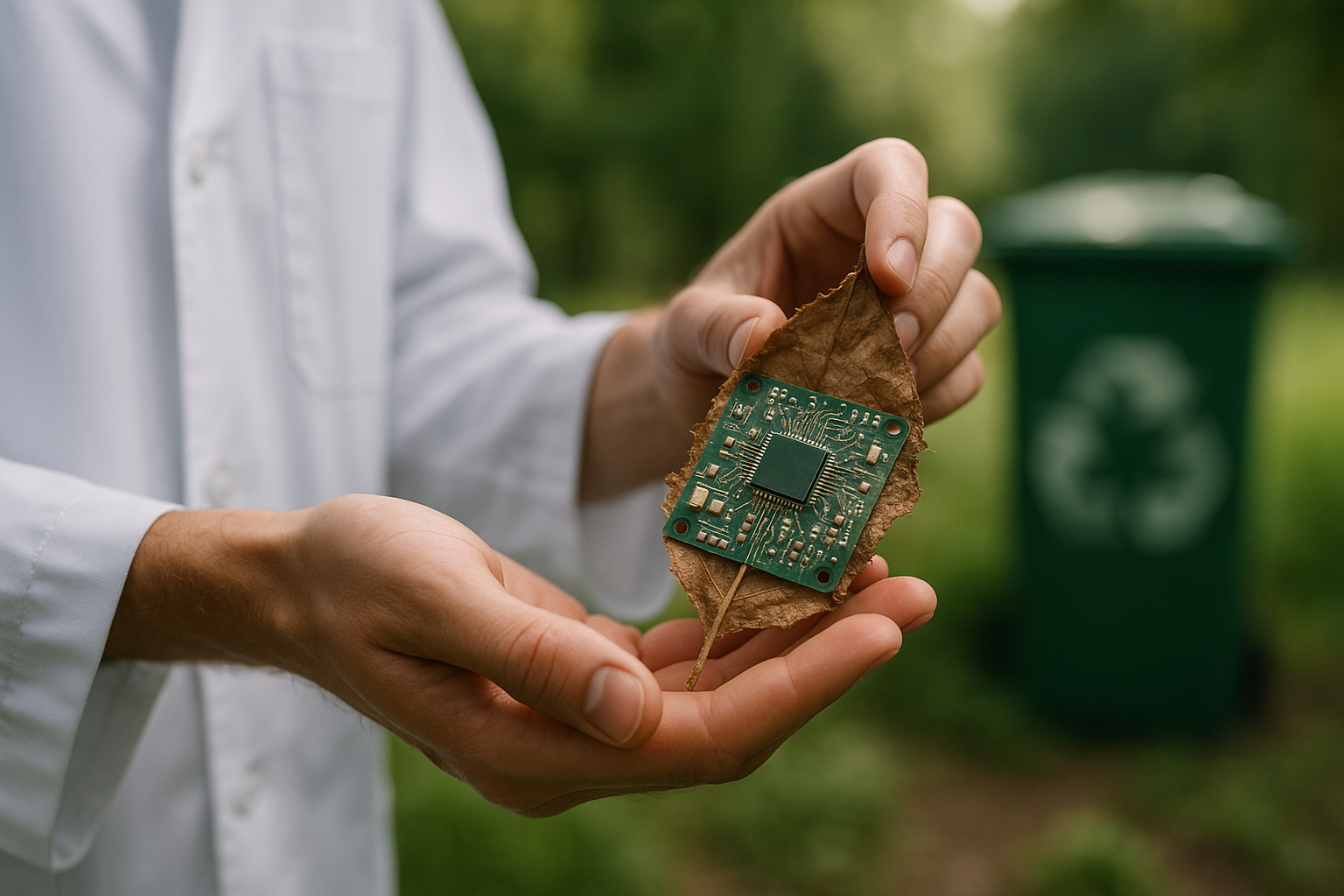Unveiling the Mysteries: The Hidden Power of Biodegradable Electronic Devices
By the time you finish reading this sentence, thousands of electronic devices will have reached the end of their life cycle, contributing to the mounting e-waste crisis that's engulfing our planet. While recycling efforts are on the rise, there's a new game-changer in town that could potentially reshape our approach towards electronic waste — biodegradable electronics.

Background: The Emergence of Biodegradable Electronics
The concept of biodegradable electronics isn’t new, but it’s only recently that it’s begun to gain traction in the tech industry. Researchers have been exploring the potential of biodegradable materials in electronics for several decades, with the aim of creating devices that can decompose naturally once discarded. This not only reduces the amount of e-waste in landfills but also minimizes the environmental footprint of electronics manufacturing.
Back in the early 2000s, the first prototypes of biodegradable electronics started to appear. These were rudimentary devices, often made from organic materials like cellulose or silk. However, the relentless march of technology over the past two decades has resulted in significant advancements in the field. Today, we have biodegradable electronics that are not only functional but are also competitive in terms of performance with their non-degradable counterparts.
The Current Scenario: The New Wave of Biodegradable Electronics
As of 2022, biodegradable electronics are no longer a distant dream. There’s a slew of new developments in the field, with companies and research institutions around the world unveiling innovative devices that are both high-performing and eco-friendly. For instance, researchers at Stanford University have developed a biodegradable semiconductor chip made from wood-based cellulose nanofibril (CNF) material. Elsewhere, a team of scientists at the University of Wisconsin-Madison has created a biodegradable computer chip made from a flexible, yet robust, material known as nanocellulose.
Market Impact and Price Range
Given their eco-friendly nature, biodegradable electronics have the potential to disrupt the tech industry. The global e-waste management market, worth $49.4 billion in 2020, is projected to grow to $70 billion by 2026, according to a report by Global Market Insights. The rise of biodegradable electronics could play a significant role in this projected growth.
In terms of price, biodegradable electronics are expected to be more expensive than their non-biodegradable counterparts, at least initially. However, as production scales and technology improves, the price is likely to drop, making these eco-friendly devices more accessible to a broader consumer base.
The Future: Towards a Sustainable Tech World
While there’s palpable excitement around biodegradable electronics, the technology is still in its early stages. There are challenges to overcome, including improving the durability and longevity of these devices. However, if we can successfully navigate these hurdles, the potential benefits are enormous.
Biodegradable electronics could revolutionize the way we produce and dispose of our electronic devices, offering a sustainable solution to the growing e-waste crisis. In a world increasingly conscious of its environmental footprint, these devices could be the next big thing in the tech industry, transforming our relationship with electronics and paving the way for a more sustainable future.
In conclusion, while biodegradable electronics might not be a panacea for our e-waste woes, they certainly represent a step in the right direction. It’s a fascinating area to watch, and it’s exciting to think about where it might lead us in the coming years. So, the next time you discard an electronic device, imagine a future where instead of contributing to a growing pile of e-waste, it simply decomposes back into the Earth. That future might not be as far away as you think.




